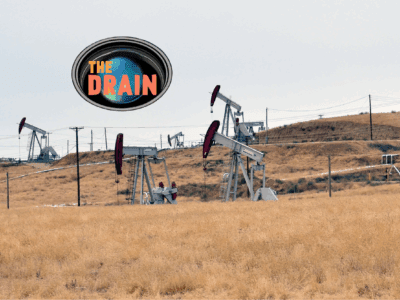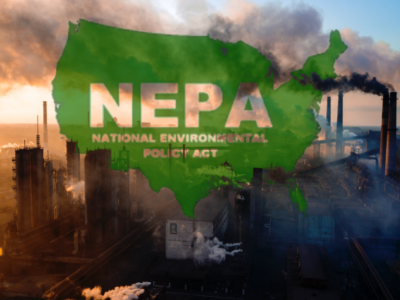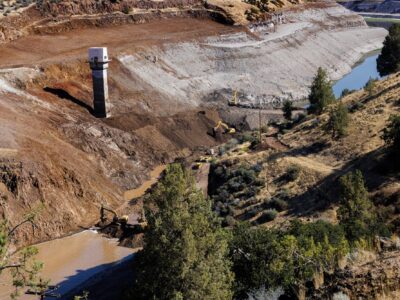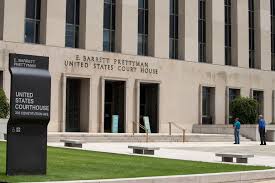Ecosystems
What does ‘Drill, Baby, Drill’ Mean in California?
The Drain is a weekly roundup of environmental and climate news from Legal Planet.
A court fight over oil drilling off the coast of Refugio State Beach near Santa Barbara. Proposals to drill around public schools in Ojai and Los Osos. The potential for oil operations directly adjacent to popular national monuments. New risks to our ecosystems that sustain imperiled species like the California condor. This is what “Drill, …
Continue reading “What does ‘Drill, Baby, Drill’ Mean in California?”
CONTINUE READINGShortchanging the Environment While Making NEPA More Chaotic
Trump replaced a coherent set of rules governing the executive branch with a welter of agency-specific regulations.
In one of Trump’s first executive orders, he eliminated a centralized system that Jimmy Carter initially set up to issue regulations governing environmental impact statements. Instead, he called on each agency to issue its own regulations, which seems to have caused the predictable amount of confusion. There seems to be little rhyme or reason in the variations
CONTINUE READINGWe need integrated funding to scale up multibenefit projects
by Marie Grimm, Anna Serra-Llobet, Molly Bruce, and Michael Kiparsky
Climate and ecological challenges are fundamentally linked, demanding solutions that address both environmental and social issues. Multibenefit projects–like levee realignments that reconnect floodplains–can combine climate adaptation, water management and ecosystem restoration efforts. However, most funding programs focus on single-purpose projects, making it difficult to support multibenefit solutions. Our new article studies the Pajaro River flood …
Continue reading “We need integrated funding to scale up multibenefit projects”
CONTINUE READINGExecutive Disorders
One after another, Trump has let loose destructive blasts at the environment to promote fossil fuels, mining, and logging.
We all know that Trump has issued a slew of executive orders since taking the oath of office. We also know that many of these are aimed to promoting fossil fuels, mining, and logging at the expense of the environment, while disfavoring renewable energy. Still, it’s impressive when you put the list together to see the full onslaught.
CONTINUE READINGGovernors Lead the Fight on Forests and Climate
To see how governors are leading the fight against deforestation, look no further than a meeting happening this week in Brazil.
When the annual U.N. climate conference descends on the small Brazilian rainforest city of Belém in November 2025, it will be tempting to focus on the drama and disunity among major nations. Only 21 countries had even submitted their updated plans for managing climate change by the 2025 deadline required under the Paris Agreement. The U.S. is pulling out of …
Continue reading “Governors Lead the Fight on Forests and Climate”
CONTINUE READINGSuccess! Removing the Klamath Dams
A “Good News” Environmental Story (For a Change)
Most of the environmental law and policy matters discussed on Legal Planet–especially over the past few months–have dealt with natural resource crises, environmental rollbacks, hostile political actors and actions in Washington, D.C., etc. So let me take this opportunity to share an upbeat and inspirational environmental story in these otherwise troubled environmental times. In 2022, …
Continue reading “Success! Removing the Klamath Dams”
CONTINUE READINGDisappointed in National Leadership? Look to States
With nations lagging behind on climate, states and provinces are coming up with investment opportunities to protect forests and ecosystems internationally.
Only 13 of the 195 signatory countries to the Paris Agreement submitted new national plans for tackling climate change by the recent deadline. Meanwhile President Trump has begun the process of the U.S. withdrawing from that agreement — again. This US withdrawal from global leadership is a perfect time to refocus attention and support at …
Continue reading “Disappointed in National Leadership? Look to States”
CONTINUE READINGThe Legal Complexities of Deregulating Power Plant Carbon Emissions
The Supreme Court struck down Obama’s powerplant regulation. but it didn’t endorse Trump’s first try either.
We are likely to end up with a Trump rule for powerplant emissions that is much weaker than the Biden rule, but not as weak as EPA’s effort in the first Trump Administration. And the process will take Trump longer this time, with a greater litigation risk.This matters because even a very weak rule may require significant investments in improving powerplant efficiency, which could result in some plant closures.
CONTINUE READINGHow to Grow a Victory Garden out of Trash
Private recycling subscription services are helping my family divert our waste, though I wish we didn’t need them.
While unelected billionaires and sycophant cabinet members are pretending to get rid of waste in Washington, I’ve declared war on waste, fraud, and abuse in my own Los Angeles home. My family is fighting food and plastic waste using a pair of recycling subscription services. Yes, I realize it’s just a small ripple in the …
Continue reading “How to Grow a Victory Garden out of Trash”
CONTINUE READINGLitigating Against Trump
Trump’s agencies had a terrible litigation record the first time. It will probably get better – but not that much better.
In his first term, Trump’s litigation record was awful – winning only one case in four by some estimates.The Trump folks should do a better this time. But they may not improve that much, and could still lose more often than they win. Money invested in litigating against the Administration will be well spent. Meticulous attention to evidence and legal requirements is likely to remain a weak point.
CONTINUE READING












